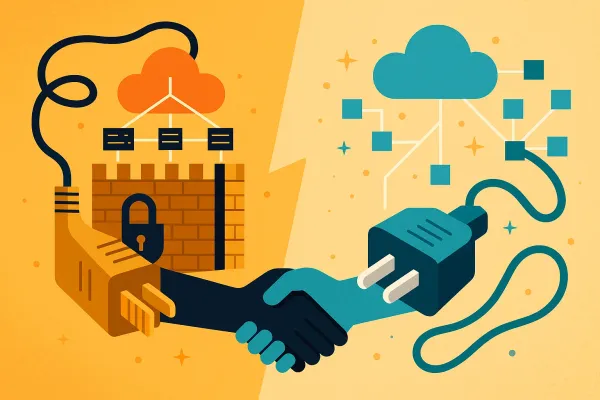The Handbrake on Innovation: Why Your IT Security Is Costing You More Than You Think
Legacy IT security models stifle innovation, forcing engineers to fight slow VPNs and restrictive laptops. Zero Trust shifts focus: never trust, always verify. It removes friction, boosts productivity, and protects your business, unlocking true agility and competitive advantage.
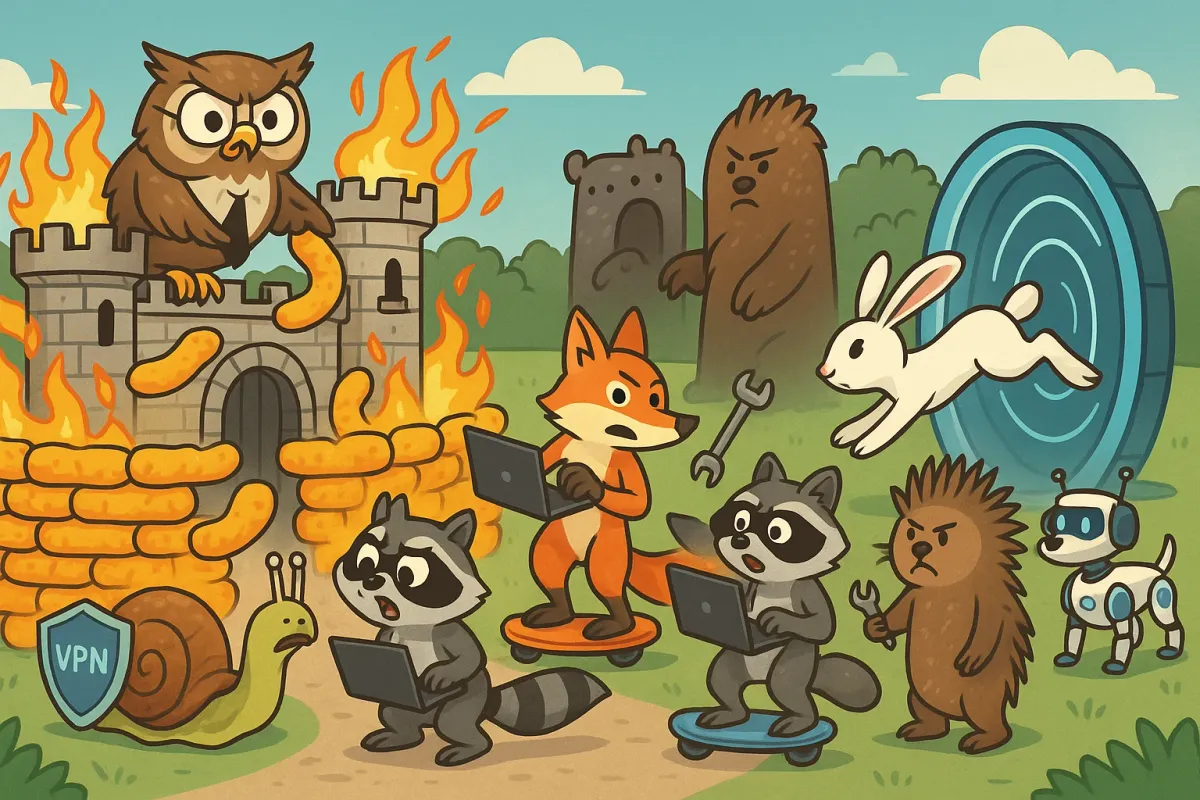
We’ve all been there. It’s 4:45 PM on a Thursday. Your engineering team is in the zone, on the cusp of cracking a problem that’s been plaguing the latest product release. A developer needs to install a new testing tool—a small, standard utility in the open-source world. They click "install."
Access Denied.
A ticket must be filed. It goes into a queue. The IT-mandated antivirus scan, designed for a different era, grinds the developer’s high-powered machine to a halt. The corporate VPN, which backhauls every single packet of data through a congested server two time zones away, drops the connection for the third time that hour. The flow state is shattered. The momentum is lost. The breakthrough that was moments away dissolves into a sigh of resignation.
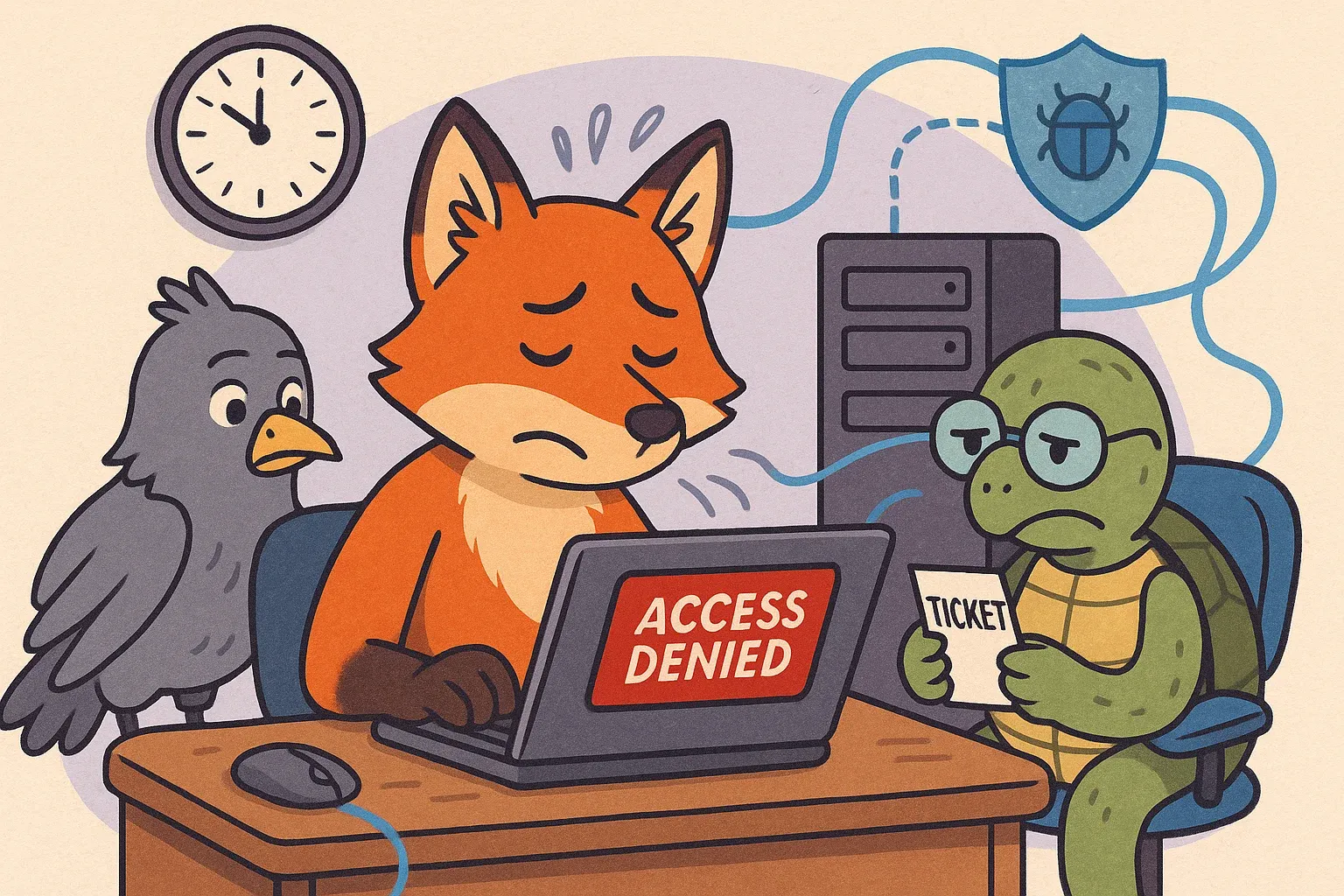
This isn’t a hypothetical scenario; it’s the daily reality in countless technology companies. We celebrate agile development, preach "move fast and break things," and invest millions in attracting top-tier engineering talent. Yet, we chain them to an IT and security infrastructure that seems frozen in time. We ask them to build the future using tools from the past.
This isn't just a technical problem or a minor inconvenience. It's a deep, systemic issue that acts as a silent handbrake on innovation, a drain on morale, and a direct threat to your company's competitive edge. It’s time to talk about the real cost of clinging to the old ways and explore the transformative potential of a new mindset—one that promises not only to make you more secure, but to make you faster, smarter, and more innovative than ever before.
The Crumbling Castle: Deconstructing the Myth of the Secure Perimeter
For decades, corporate security has been built on a simple, intuitive metaphor: the "castle-and-moat." The company’s internal network is the trusted castle, and the public internet is the dangerous, untrusted world outside. We built a formidable moat around our castle using firewalls, proxies, and intrusion detection systems. To grant access to our remote workers—our trusted knights venturing into the wild—we gave them a secret tunnel: the Virtual Private Network (VPN).
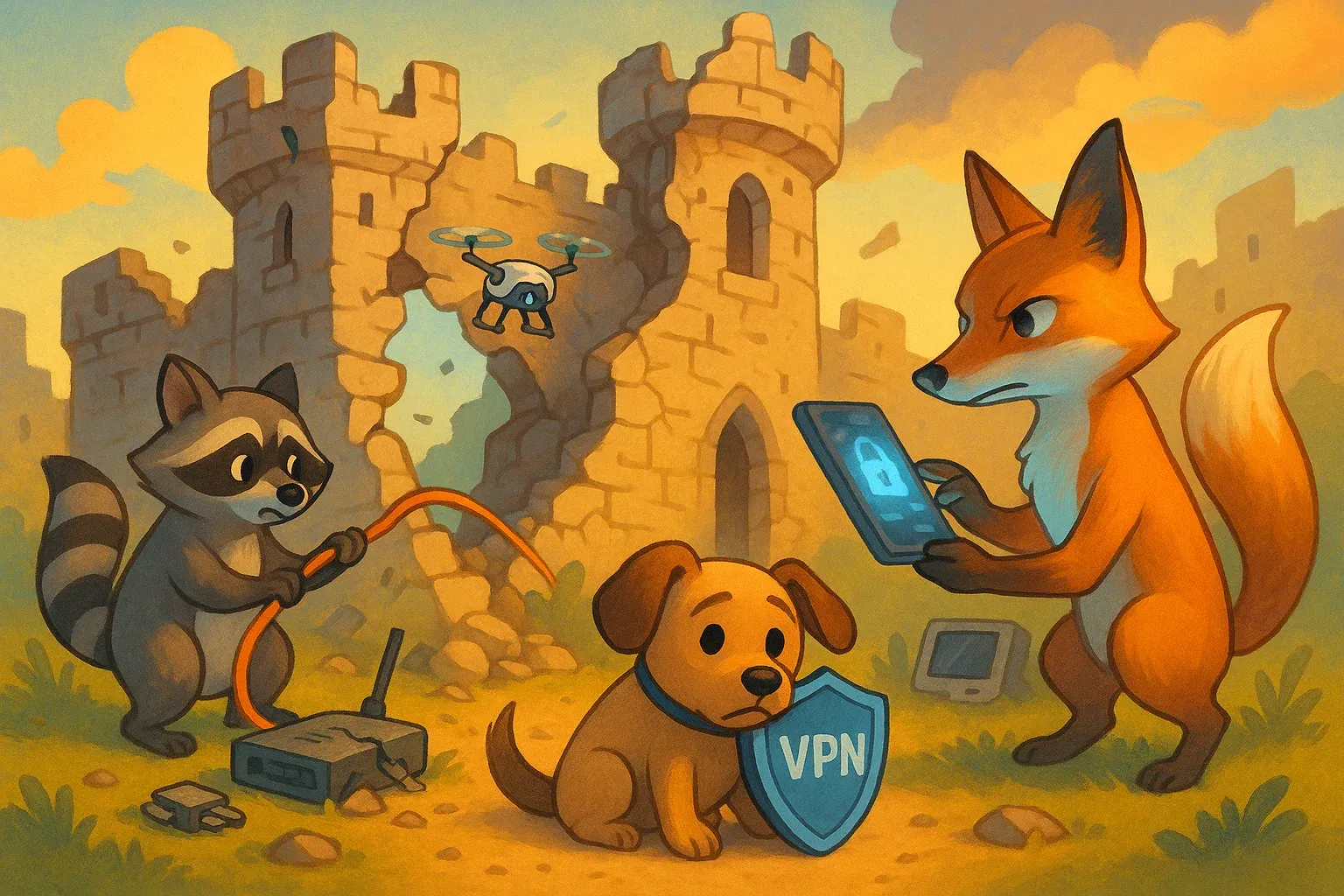
Once inside the castle walls, a user was generally trusted. They could roam the halls, access the libraries, and interact with most of the kingdom’s resources. This model worked when the kingdom was small and self-contained—when all employees worked in the office, all data lived on-premises, and all devices were issued and controlled by the company.
The "trusted network" idea typically builds on some form of belief in a perfect system of prevention. Reliance on this has almost always been shown to be cognitive dissonance at best.
That kingdom no longer exists.
Today, the "castle" is a distributed empire. Our workforce is remote and hybrid, connecting from home networks, coffee shops, and airports. Our data and applications are scattered across a multi-cloud landscape of AWS, Google Cloud, and countless SaaS providers. Our employees use personal laptops and mobile phones to get their work done.
The perimeter has dissolved. The moat has evaporated. Yet, we continue to operate as if the walls still stand.
This isn't just a philosophical problem; it has severe, practical consequences. The castle-and-moat model’s greatest weakness is its binary concept of trust. It assumes that if you’re inside, you’re safe. This means that if a single attacker successfully phishes a user's credentials or exploits a vulnerability to get inside, they’ve hit the jackpot. They can often move laterally across the network with frightening ease, turning a small breach into a catastrophic event. The "blast radius" is enormous.
For the modern engineer, the tools of this old world are a source of constant friction—a "productivity tax" they are forced to pay every single day.
The VPN Bottleneck: For a developer, a traditional full-tunnel VPN is a nightmare. It forces every bit of data—from massive code compilations and multi-gigabyte container image downloads to their Spotify stream—through a single, centralized chokepoint. This introduces crippling latency, eats up bandwidth, and leads to frequent, frustrating disconnects. Even Microsoft, during its massive shift to remote work, had to re-architect its network to use "split-tunneling," a policy that intentionally routes most traffic away from the VPN to maintain productivity. The lesson is clear: at the highest level of enterprise scale, the key to making the VPN work was to use it as little as possible.
The Locked-Down Laptop: The second instrument of this tax is the heavily restricted developer machine. From an IT perspective, a standardized, locked-down environment is easier to manage and support. From a developer's perspective, it's a digital straitjacket. Modern software development requires a vast and constantly evolving ecosystem of tools. When a developer has to file a ticket and wait hours or days for approval to install a necessary library or update their code editor, innovation grinds to a halt. It’s a symptom of a deep organizational divide, where IT’s mandate for stability clashes directly with engineering’s mandate for speed.
This friction isn't just about lost hours. It's about lost momentum. It's about the death of a thousand tiny cuts to creativity and morale. When your most expensive, most valuable talent spends a significant portion of their day fighting their tools instead of solving problems, you are not just slowing down your product roadmap. You are actively suppressing your company's ability to innovate. Research shows that companies spending the bulk of their IT budget—in some cases up to 85%—simply maintaining legacy systems have little left to invest in the future. You cannot build an agile, innovative culture on top of a rigid, restrictive, and outdated technological foundation.
A New Philosophy: "Never Trust, Always Verify"
What if we could build a system that was both more secure and dramatically less frustrating? What if we could give our developers the freedom and speed they need, while simultaneously shrinking our attack surface and containing the blast radius of any potential breach?
This isn't a fantasy. It's the promise of a new security paradigm called Zero Trust.
Zero Trust is not a product or a piece of hardware. It's a fundamental shift in philosophy. It starts with a simple, powerful premise: "Never trust, always verify."
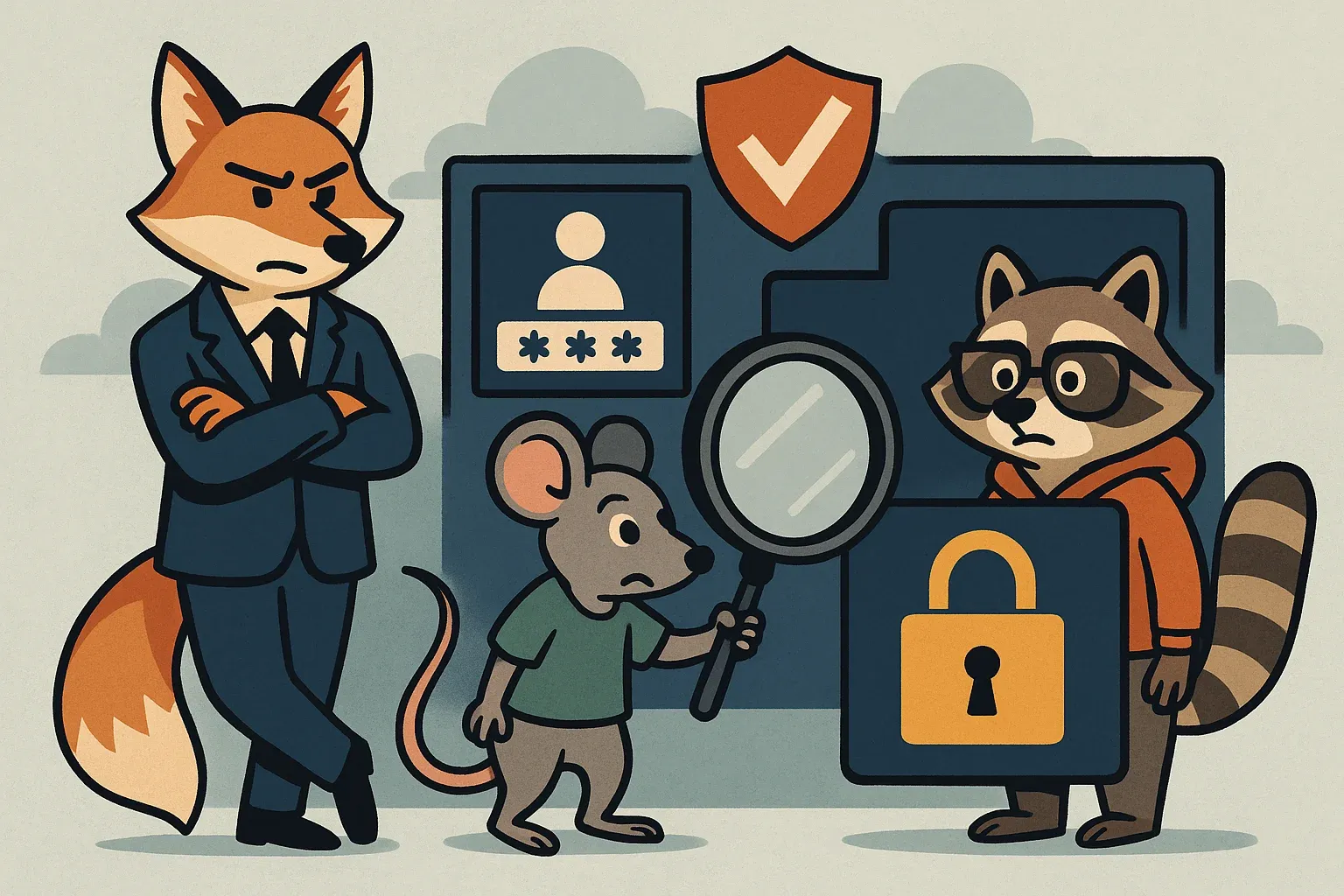
This idea completely inverts the castle-and-moat model. It assumes that threats exist both inside and outside the network. It eliminates the dangerous concept of a "trusted" internal network altogether. In a Zero Trust world, no user, device, or application is trusted by default. Every single request to access a resource—whether it's from a developer in your headquarters or a contractor on the other side of the world—is treated as if it came from a hostile network. It must be explicitly authenticated and authorized, every single time.
This might sound restrictive, but in practice, it's liberating. By shifting the defensive focus from an imaginary perimeter to the resources themselves, we can build a security model that is more granular, more intelligent, and far more user-friendly.
The core tenets of a Zero Trust Architecture, as formalized by institutions like the National Institute of Standards and Technology (NIST), are:
- Continuous Verification: Authentication isn't a one-time event at login. Trust is temporary and must be constantly re-evaluated. Connections time out, forcing re-verification and ensuring a compromised account can’t be used indefinitely.
- Limit the Blast Radius: This is achieved through two powerful techniques. First, the Principle of Least Privilege ensures users and services are granted the absolute minimum level of access needed to do their job, for the shortest possible time. Instead of a VPN giving you the keys to the whole network segment, you get access only to the specific application you need, for as long as you need it. Second, microsegmentation logically divides the network into small, isolated zones. If one segment is compromised, the attacker is trapped; they cannot move laterally to other parts of the network.
- Automate Context Collection: Access decisions are dynamic and intelligent. The system continuously analyzes a rich set of signals—Who is the user? Is their device healthy and up-to-date? Where are they connecting from? Is their behavior normal?—to make real-time decisions about granting access.
For developers, the experience is transformative. The clunky, slow VPN client disappears, replaced by a seamless Single Sign-On (SSO) experience. They log in once at the start of the day and gain transparent access to all the tools and services they are authorized to use, whether they're on-premises, in the cloud, or part of a partner's network. Collaboration becomes smoother and safer. The "work from anywhere" promise becomes a reality, with consistent, performant access from any location.
Even better, modern Zero Trust platforms allow security policy to be managed as code. Access rules can be written in a human-readable format, version-controlled in Git, peer-reviewed, and deployed automatically. Security stops being a bureaucratic, ticket-based roadblock and becomes an integrated, programmable part of the DevOps lifecycle.
Making the Leap: It's a Culture, Not a Cable
The transition to Zero Trust is not about ripping and replacing hardware. It is a profound cultural and organizational transformation. In fact, recent surveys show that the single biggest reason Zero Trust projects fail is not budget or technology, but "organizational issues" and the challenge of "aligning teams."
Successfully navigating this shift is a litmus test for your company's agility and health. It forces a level of cross-functional collaboration that may be completely new, breaking down the decades-old silos between security, networking, infrastructure, and application development teams.

Here’s how to approach this human challenge:
- Secure Executive Sponsorship: This cannot be just another IT project. It needs a champion in the C-suite who can articulate the business value—reduced risk, faster innovation, improved productivity—and provide the political air cover needed to see it through. The leader must consistently communicate the "why" behind the change.
- Build a Cross-Functional Team: You cannot implement Zero Trust from within the security team alone. Create a dedicated, empowered task force with members from every stakeholder group: networking, security, applications, and the business units themselves. Give them a clear mandate, shared goals, and the authority to make decisions. When questions arise, like "Who owns microsegmentation, networking or security?" the answer must be "Both, working together."
- Communicate, Educate, and Train Relentlessly: Resistance to change is human nature. Counter it with a proactive communication plan. Explain the benefits for each group: better performance and less friction for developers; simpler, more automated management for IT; and a quantifiable reduction in breach risk for the business. Invest in training to build a culture of shared responsibility, where security is seen as an enabler, not a barrier.
- Embrace an Agile Approach: Don't try to boil the ocean with a "big bang" deployment. Treat the migration like an agile software project. Start with a small, high-impact pilot—like replacing the VPN for your engineering team. Their success will create a powerful internal case study and turn them into your most vocal advocates. Gather feedback, learn from the experience, and iterate. This phased approach minimizes disruption and builds momentum.
The Business Case They Can't Ignore
To get the resources and buy-in you need, you must speak the language of the business: money and risk. The beauty of a well-executed Zero Trust migration is that it can be framed not as a cost center, but as a self-funding optimization initiative.

The "easy path" to Zero Trust is to simply use it as a one-for-one replacement for your VPN, migrating all your old, messy access policies. This is a false economy. It papers over the underlying complexity and preserves all the waste in your IT portfolio.
The transformative path uses the migration as a forcing function for a long-overdue house cleaning. To create the granular, least-privilege policies that are the heart of Zero Trust, you are forced to conduct a thorough inventory of your entire application landscape. You have to ask: Who owns this application? What is its business purpose? Who truly needs access to it?
This process inevitably uncovers a "Zero Trust Dividend." You'll find redundant applications that can be consolidated. You'll find obsolete systems with no clear owner that can be retired. This generates hard-dollar savings that can build a powerful ROI case:
- Direct Cost Savings: Retiring applications eliminates licensing fees, which can account for 20-40% of software spending. Consolidating infrastructure reduces cloud compute and storage costs.
- Reduced Breach Costs: The numbers are staggering. One IBM study found that organizations with a mature Zero Trust deployment save an average of $1.76 million per data breach compared to those without.
- A Self-Funding Initiative: The combined savings from application rationalization and reduced breach risk can often fund the entire migration within 12 to 18 months. After that, the ongoing security improvements are effectively free.
Furthermore, Zero Trust strengthens your compliance posture. Frameworks like SOC 2 and ISO 27001 are built on principles of strong access control, monitoring, and risk management—the very essence of Zero Trust. By adopting this model, you move from a world of static, periodic audits to one of dynamic, continuous enforcement, making compliance a more streamlined, data-driven process.
The Future is Unlocked
Clinging to the security models of the past is no longer a viable strategy. The castle-and-moat is a relic, and the friction it creates is a tax on the very innovation you need to survive and thrive. The daily frustrations of slow VPNs, restrictive laptops, and bureaucratic access requests are not just annoyances; they are anchors holding your business back.
The shift to a Zero Trust mindset is a declaration that you are ready to compete in the modern era. It is a commitment to empowering your teams with the tools they need to do their best work, securely and without friction. It is a strategic decision to align your operational reality with your innovative ambitions.

The journey requires courage, collaboration, and a willingness to challenge long-held assumptions. But the destination is a faster, more agile, and more secure organization, ready to unleash the full creative potential of its people. It’s time to tear down the crumbling walls of the old castle, fill in the moat, and build a future that is open, dynamic, and secure by design.
Further Reading
For those interested in a deeper dive into the concepts discussed, here are some resources:
- NIST Special Publication 800-207: Zero Trust Architecture: The foundational document from the National Institute of Standards and Technology that provides a formal definition and framework for ZTA.
- The Economics of Zero Trust: Why the 'Easy' Path Costs More: An insightful analysis on the financial and strategic benefits of a transformative approach to Zero Trust implementation versus a simple VPN replacement.
- Creating a Zero Trust Architecture with ISO 27001: A practical guide on how the principles of Zero Trust align with and help fulfill the requirements of the ISO 27001 information security standard.
- Aligning Zero Trust Principles with SOC 2 Trust Service Criteria: A detailed breakdown of how a Zero Trust model reinforces each of the five Trust Service Criteria required for SOC 2 compliance.



